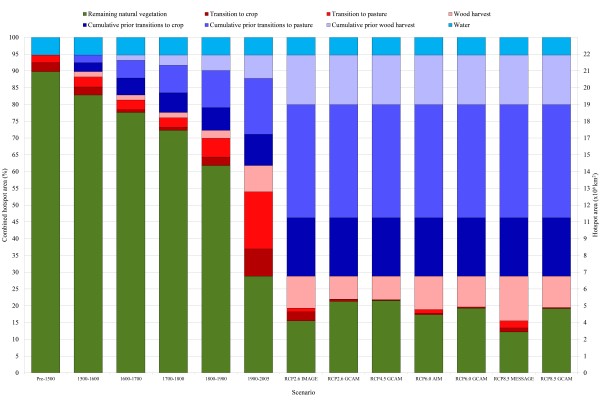New Study Investigates Potential Global Biodiversity Loss from Future Land-Use Change
The Earth is currently in the midst of its sixth mass extinction with the highest rates of species losses since the dinosaurs vanished 65 million years ago. The current extinction crisis is driven by human activities, primarily from habitat loss via landcover and land-use change; however, climate change could become the leading driver of extinctions in the future unless effective mitigation policies are implemented. How societies will meet growing demands for food and fiber while simultaneously working to mitigate climate change may critically affect biodiversity by increasing land use activities in sensitive areas. This study, led by UMD PhD student Samuel Jantz, which began as a group project in George Hurtt's Landcover Land-Use Change course (GEOG 615), includes fellow UMD PhD students Qiongyu Huang and Rachel Moore, Faculty Research Assistants Brian Barker and Jacob Noel, Assistant Research Professor Louise Chini, Professor George Hurtt, and international expert Dr. Thomas Brooks of the International Union for Conservation of Nature (IUCN). The study assessed the potential impact of future land use scenarios including climate mitigation on the potential loss of habitable area in biodiversity hotspots, distinct biogeographic regions with extremely high numbers of endemic species, due to associated land-use changes till the end of the century. They estimated the loss of natural vegetative cover under four different climate change mitigation policy scenarios based on global gridded land-use data used in the latest IPCC report, and generated extinction estimates by employing the species-area relationship. Relative to current estimates of the extent of natural vegetation, they found natural vegetative cover in biodiversity hotspots could be reduced by an additional 26-58%, depending on climate policy, and could result in hundreds to thousands of additional extinctions by 2100. These estimates of potential future extinctions were driven by land-use change only, and likely would have been higher if the direct effects of climate change had been considered. They conclude future extinctions could potentially be reduced by incorporating habitat preservation into scenario development to reduce projected future land-use changes in hotspots, or by lessening the impact of future land-use activities on biodiversity within hotspots.
Link to paper: http://onlinelibrary.wiley.com/doi/10.1111/cobi.12549/abstract
Published on Mon, 07/13/2015 - 15:32


